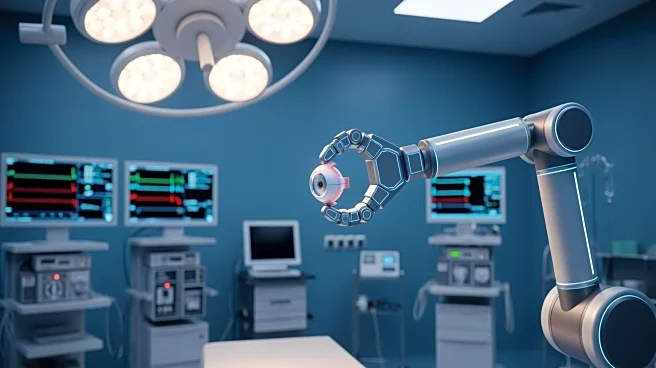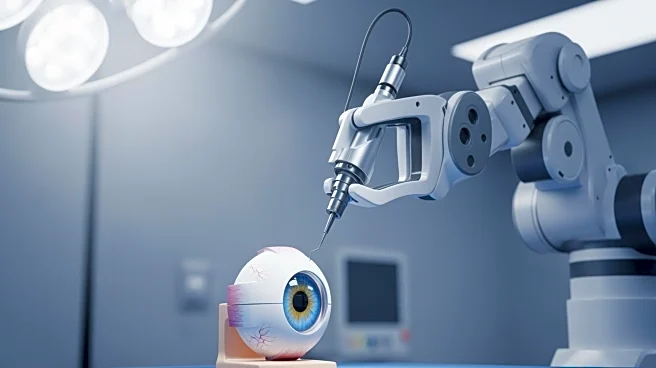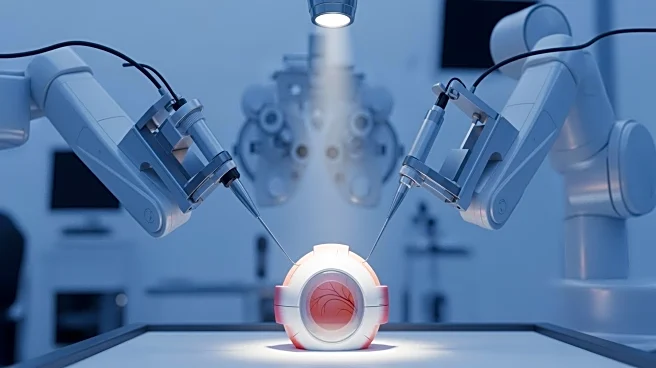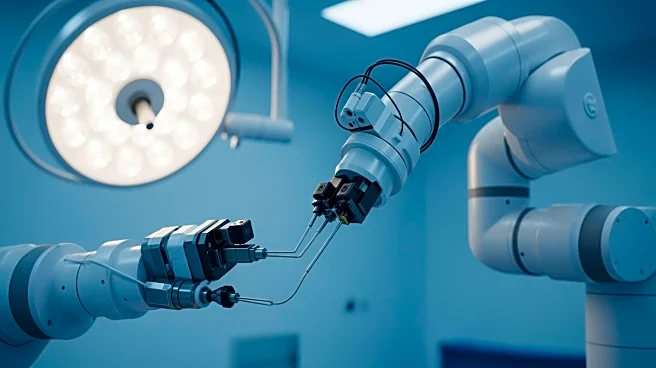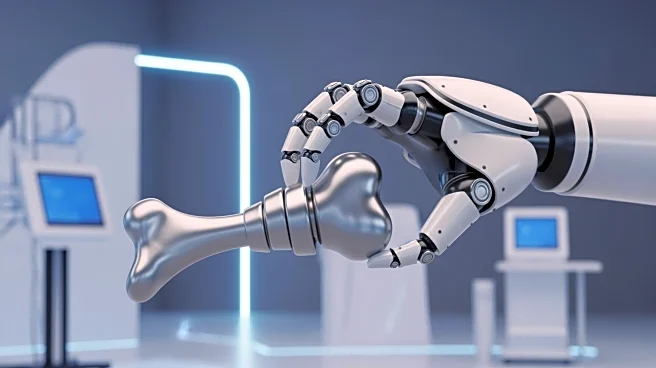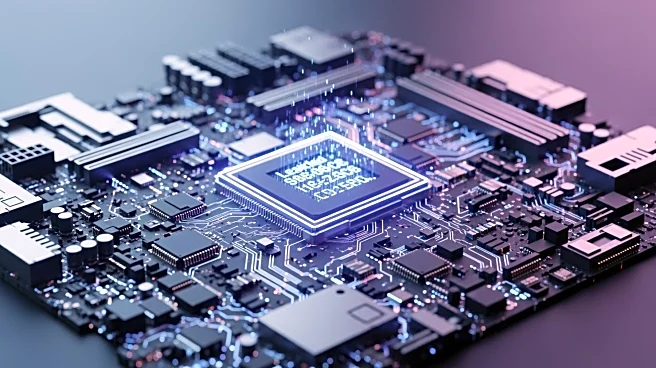What's Happening?
A new robotic system developed by researchers, including Prof. Ali Nasseri, is set to revolutionize eye surgery by delivering precise injections with a deviation of just 25 micrometers. This system uses
a high-precision manipulator and optical coherence tomography (OCT) to track and adapt to involuntary eye movements during surgery. The TUM Clinic has been instrumental in this development, aiming to reduce complications such as inflammation that can occur with manual injections. The project, named GRATA, is funded by the Federal Ministry of Research, Technology, and Space with €1.91 million over three years.
Why It's Important?
The introduction of this robotic system could significantly enhance the precision and safety of eye surgeries, potentially reducing the risk of complications and improving patient outcomes. This advancement is particularly relevant for the aging population, where conditions like age-related macular degeneration (AMD) are prevalent. The technology also represents a step forward in integrating AI and robotics into medical procedures, which could lead to broader applications in various surgical fields.
What's Next?
Before the robotic system can be used in human surgeries, it will undergo further testing on the eyes of deceased pigs, followed by live animal trials in early 2026. Human clinical trials are anticipated in the following years, contingent on the success of these preliminary tests. The ongoing development and testing will be crucial in refining the technology and ensuring its safety and efficacy for human use.
